
We’ve come a long way from the basic Google search result pages of the past. Over the years, Google has continuously optimized and improved the way search results are displayed to the end-user. With the introduction of rich results, web pages now have the opportunity to display more than just basic information in search result snippets.
Google’s rich results include additional information about a web page depending on the type of content it includes. For example, a blog article might display with an image and a publish date, or a product page might display with reviews and a price included. Rich results typically appear above regular search results, making them an attractive option for marketers and website owners.
Keep reading to learn more about the benefits of rich results, how you can enable them for your web pages, and what are the most popular rich snippet types.
Google’s rich results include additional information about a web page depending on the type of content it includes. For example, a blog article might display with an image and a publish date, or a product page might display with reviews and a price included. Rich results typically appear above regular search results, making them an attractive option for marketers and website owners.
Keep reading to learn more about the benefits of rich results, how you can enable them for your web pages, and what are the most popular rich snippet types.
What are the benefits of rich results?
You may be wondering if it’s worth focusing your search engine optimization efforts on getting your web pages to display as rich snippets. When compared to basic result snippets, rich results can:- Increase click-through rate. Rich snippets stand out from regular results, which can increase the chances of a user visiting your page.
- Improve rankings. Rich results require the use of structured data, which in turn makes it easier for search engines to understand your content, increasing your chances of better search rankings.
- Increase user engagement. Rich results are often more relevant to a user’s search as well as display additional information about page content, which helps users to understand exactly what they find if they click through to the page. This helps to generate more engaged visitors to your site and decrease bounce rate.
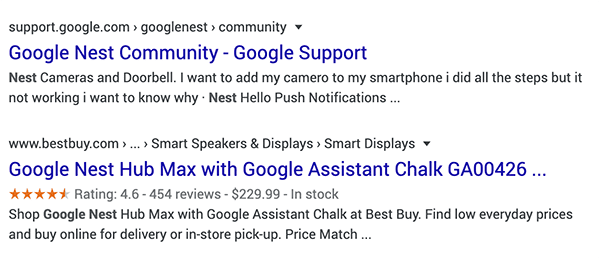 Compare the two Google search results shown above—the first is a basic snippet, and the second is a rich snippet with extra information.
Compare the two Google search results shown above—the first is a basic snippet, and the second is a rich snippet with extra information.How do I enable rich results?
Google’s rich results rely on the use of structured data on a web page. This is most often in the form of schema.org markup within your website code, either in JSON-LD or microdata format. By using the proper markup and including all required fields, your content will be eligible for rich results.
If you’re unfamiliar with how to implement structured data, learn more about Google’s use of structured data or check out our introduction to using schema.
It’s important to enlist the help of an experienced web professional who is familiar with structured data for this step. If not implemented properly, structured data can end up impeding your SEO efforts instead of improving them. According to Google, “it is more important to supply fewer but complete and accurate recommended properties rather than trying to provide every possible recommended property with less complete, badly-formed, or inaccurate data.” Take a look at Google’s structured data guidelines for more information on implementation requirements.
You can check if your page is properly set up for rich results in a couple of ways:
- By using Google’s Rich Results Test. Note that this is a newer feature and not all rich result types are supported yet.
- By checking in Google Search Console. If you have a Google Search Console account, look under the “Enhancements” menu for a list of any rich result types set up on your website.
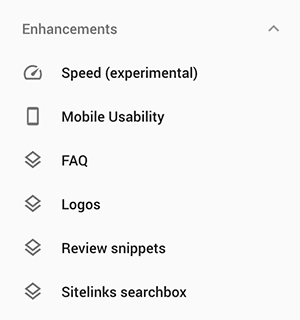
Any rich results enabled content will display in your Google Search Console account.
It can take two or more weeks to start seeing rich results pull through after any structured data has been put into place. However, it’s important to note that even if your pages are using structured data properly with all of the required fields, it’s not a guarantee that they will pull through as rich results. You can use the testing tools above to ensure that Google is reading the data properly, but whether or not you see a change in results is entirely up to Google’s algorithm.
What types of rich results are there?
There are many content types that can use structured data to generate rich results, and Google will likely continue to add to that list in the future. Below are examples of some popular content types that can be enabled to pull in as rich snippets.Article
Blog or news articles can pull into various rich results, such as the Top Stories carousel.Carousel
Multiple results from your site can be set to display in a carousel list. Carousels are most often found on mobile search results, and are supported for the Recipe, Course, Article, Restaurant, or Movie content types.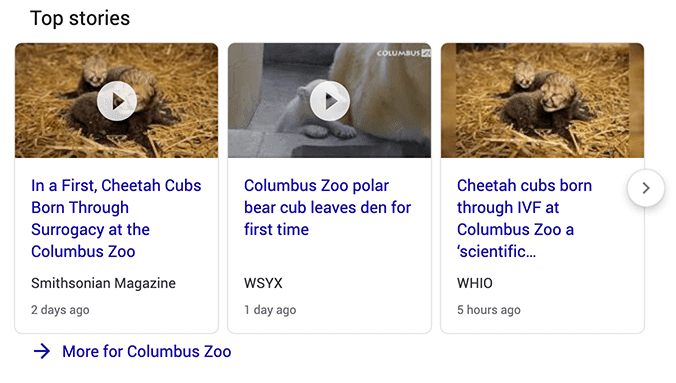
Event
Google displays events in enhanced listings, making it easier for users to find and get information about events.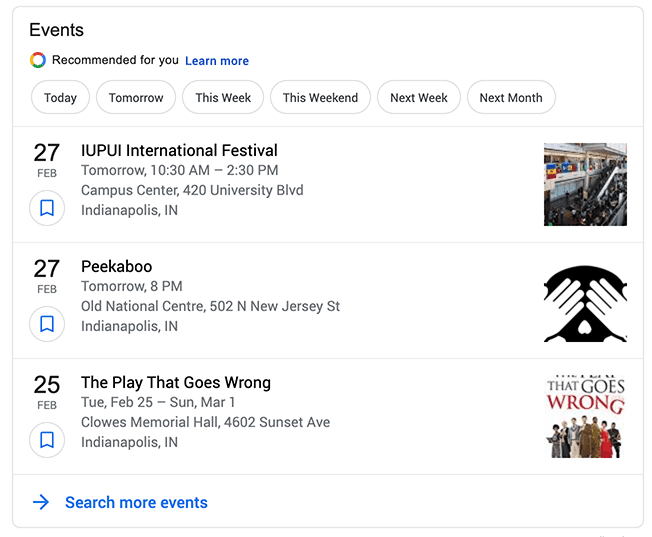
FAQ
A FAQ page snippet displays a list of questions and answers directly within search results.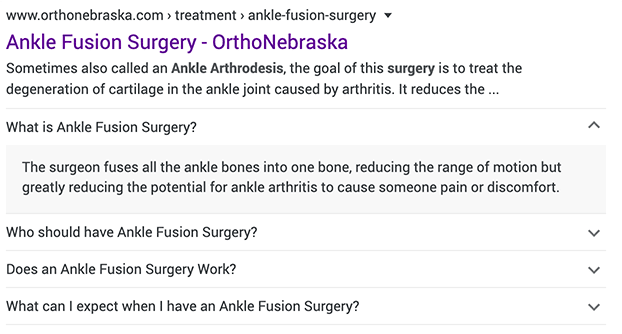
Local Business
Business details are pulled into various places across Google search results, so it’s beneficial to add the proper structured data to your website to ensure the proper information is out there.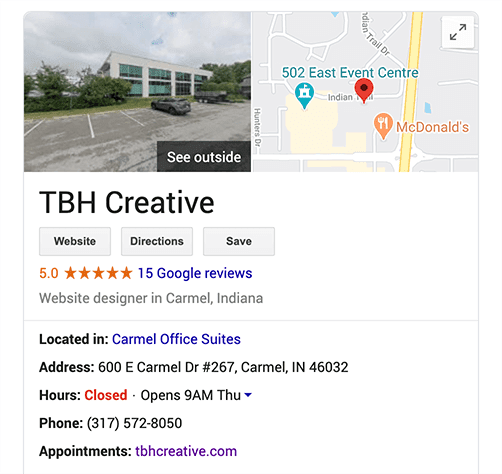
Product
Rich product results can display price, availability, and reviews directly within search results, making them more attractive to users.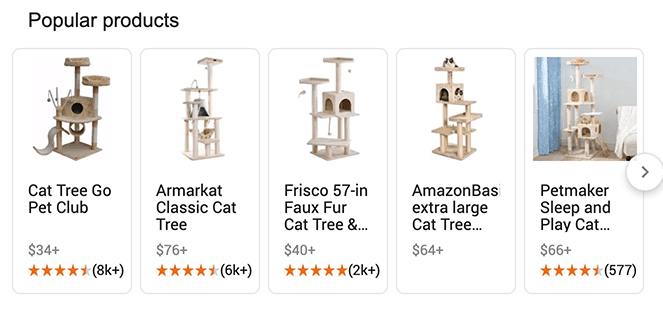
Review
Ratings and reviews for various content types can be enabled to display within Google’s results.
For a full list of the options available, check out the Google Search Gallery.
Subscribe to our marketing blog for free resources
You might also like…
